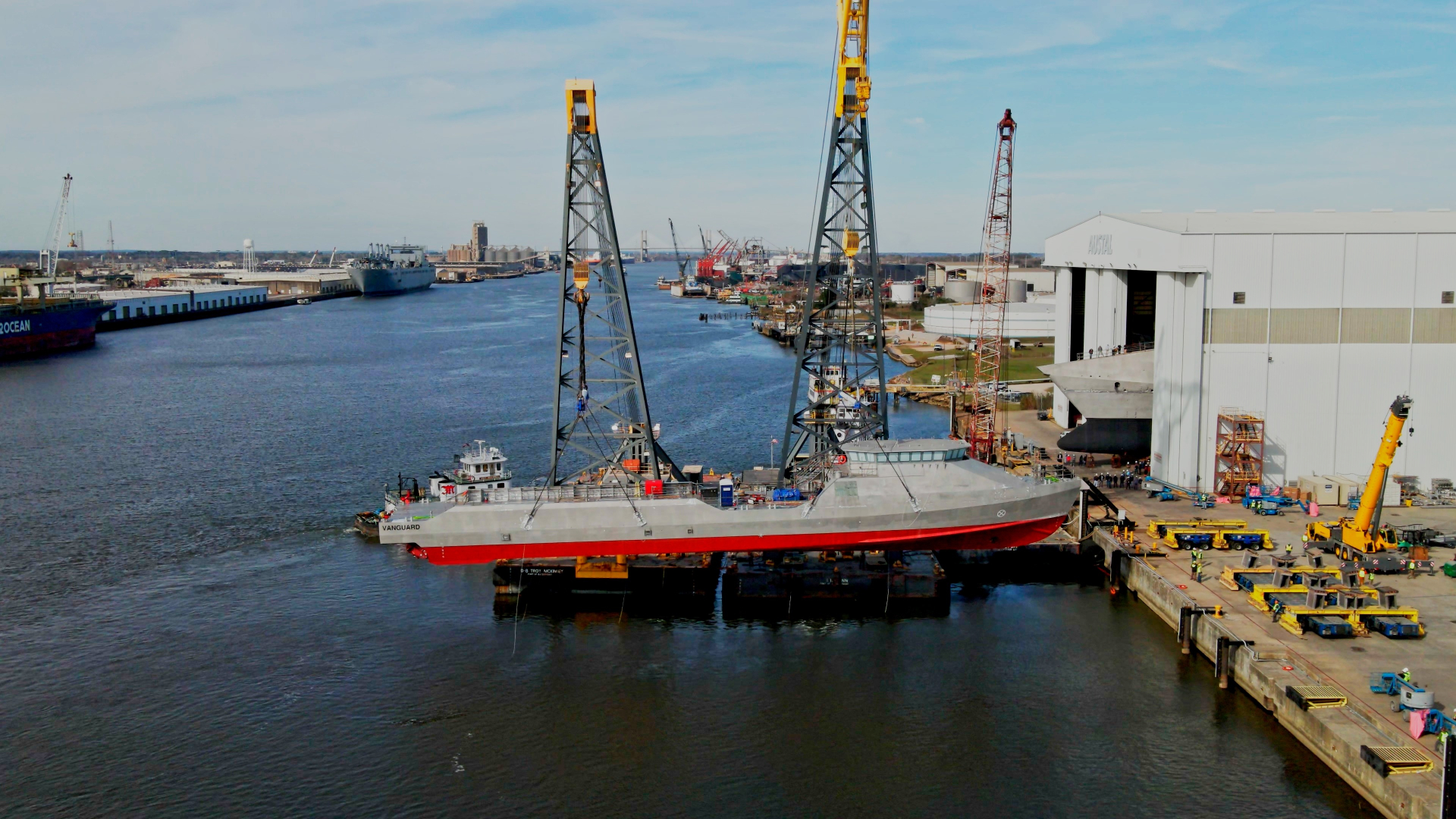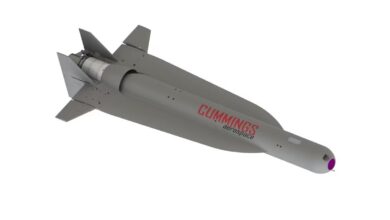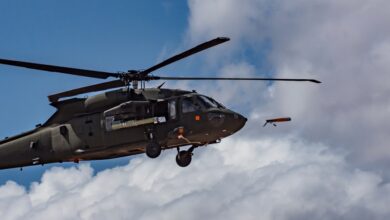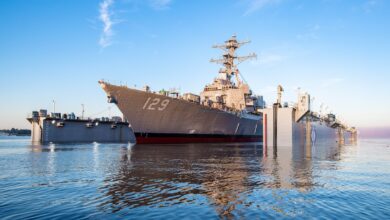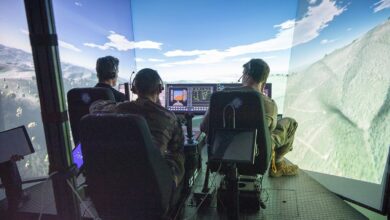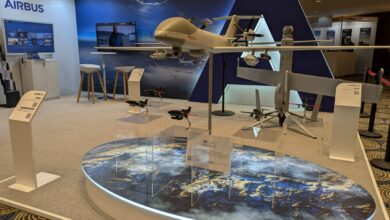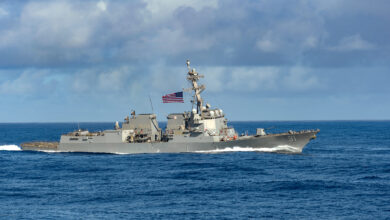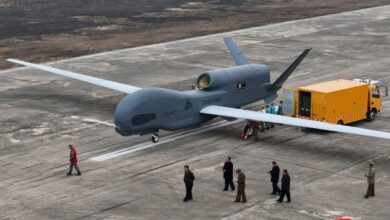Austal has launched the US Navy’s latest Overlord Unmanned Surface Vessel Vanguard (OUSV3) in Mobile, Alabama.
Manufactured in partnership with L3Harris, the OUSV is part of the US Department of Defense Strategic Capabilities Office’s “Ghost Fleet” program to develop prototype unmanned surface vessels.
The US Navy wrote that the initiative amplifies maritime experimentation and the agency’s knowledge related to future missions that will not require human intervention.
Data from the long-term program are now being used to consolidate and streamline requirements to actuate the navy’s upcoming Large USV program.
‘New Capabilities’
After tests and outfitting, the Vanguard will autonomously sail to San Diego to join its sister ships OUSV1 Ranger and OUSV4 Mariner.
It will be operated by the USV Division 1, a navy segment overseeing tactical development and corresponding trials for the development of future USVs.
The organization is currently handling the Sea Hunter and Seahawk under DARPA’s Anti-Submarine Warfare Continuous Trail Unmanned Vessel program.

“We are excited to see the progress the L3Harris and Austal teams are making on the construction of Vanguard,” Unmanned Maritime Systems Program Manager Capt. Scot Searles stated.
“Designed and built as a USV from the beginning, Vanguard will bring new, built-in capabilities that our previous OUSVs did not possess.”
Ghost Fleet Program
The plan to integrate the Ghost Fleet into the navy was first announced in 2018. The program’s first phase involved converting two commercial fast supply ships into military USVs.
Alongside autonomous capabilities, the systems received upgrades on the hull and electrical and mechanical systems. The resulting solutions were the Ranger and the OUSV2 Nomad.
The second stage focused on the Ranger and Nomad’s interoperability and endurance across complex scenarios.
Following the autonomous USV transit through the Panama Canal of both ships, the US government announced the development of the Mariner.
The Ghost Fleet vessels measure between 200 and 300 feet (61 to 91 meters) in length, similar to the size of corvettes.
Each has 16 to 32 missile-launching tubes, enabling the equipment of vertical launch systems, strike payloads, and anti-ship and ground-attack missiles.

